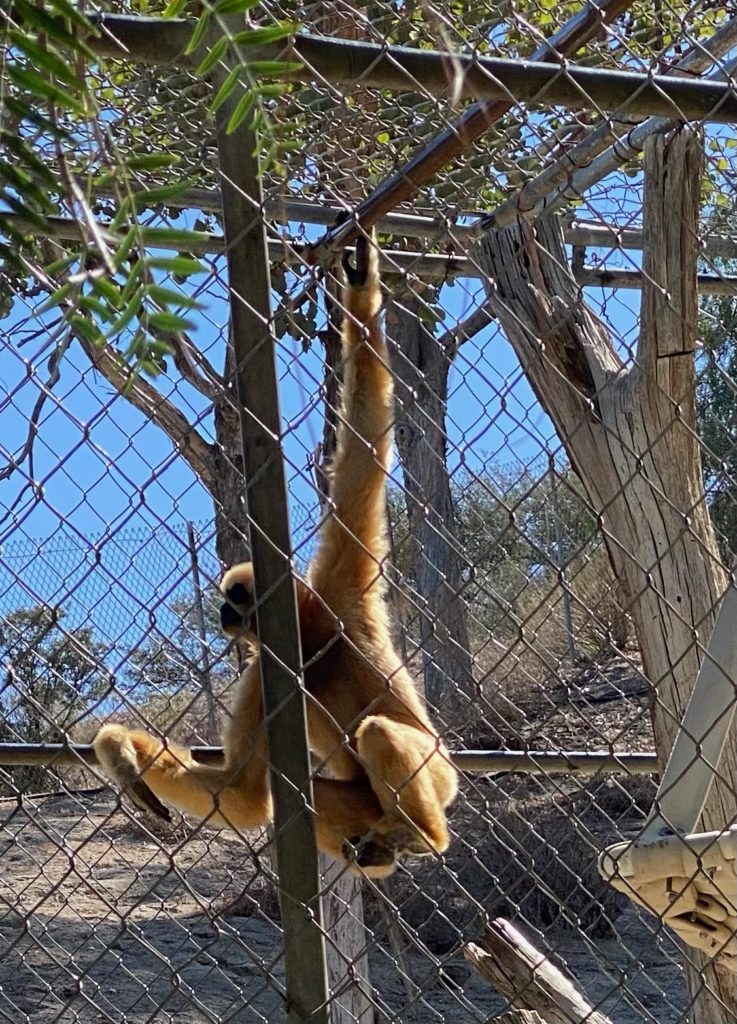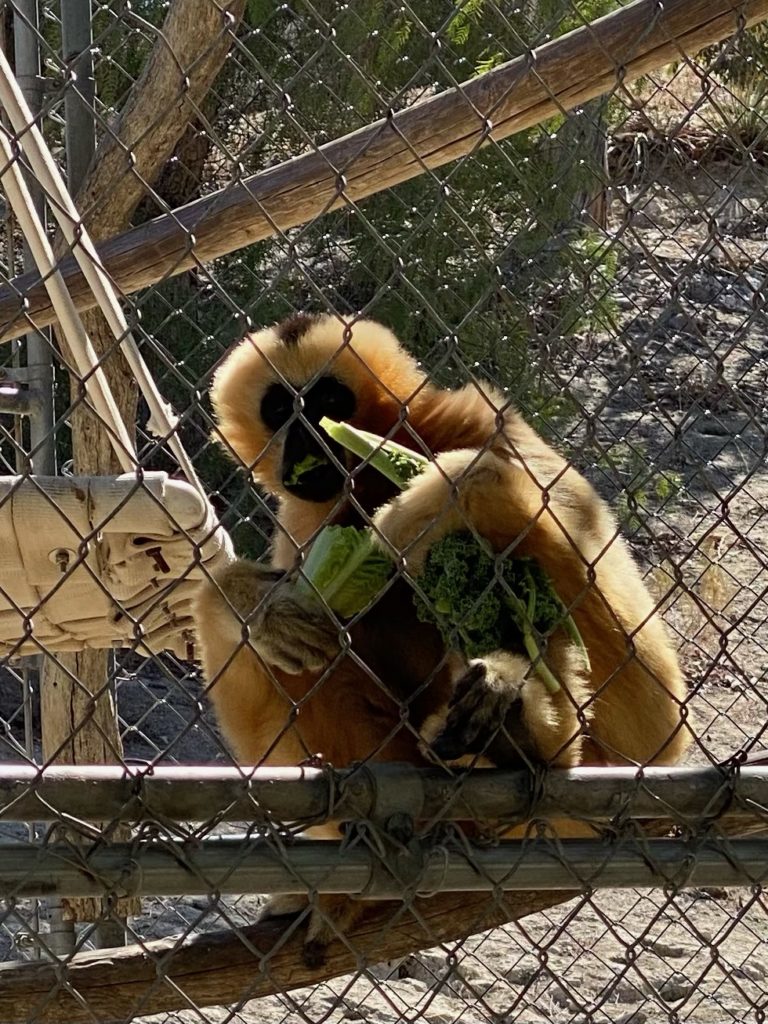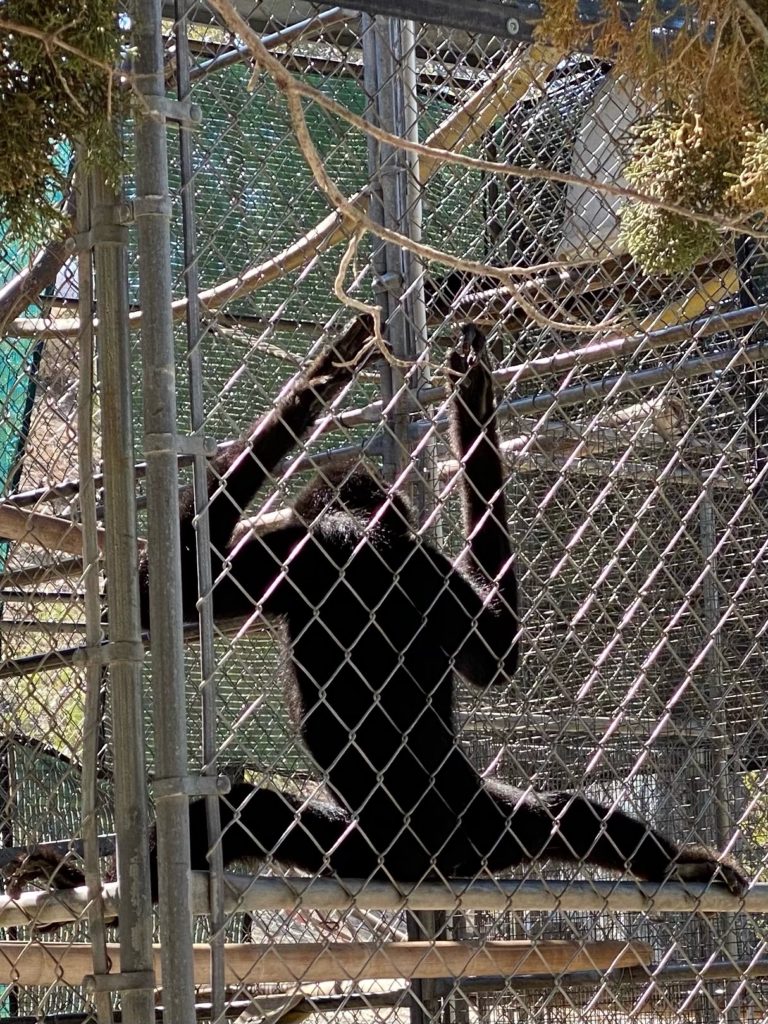What a lovely singing voice you must have.”
Bill Murray as Dr. Peter Venkman in “Ghostbusters”
This ad-lib line from the movie Ghostbusters as Bill Murray’s character is trying to contact his would-be girlfriend, Dana, who’s been possessed by the demon Zuul, came to mind on our visit to a gibbon conservatory.
Gibbons are small apes native to the dwindling rain forests of Southeast, South, and East Asia. They can be found in Thailand, China, Cambodia, Vietnam, Laos, Myanmar, Bangladesh, India, Malaysia, and Indonesia. Santa Clarita, CA (north of L.A.) isn’t on that list…but there is a Gibbon Conservation Center located here.
There were a few human grumbles during the early morning ride to the center (as it followed an LA wedding the night before), but once there, we learned so much about these funny singing creatures.
Below is a video of them singing, but also here are 10 fun facts about gibbons:
-
- Gibbons do not have visible, external tails (which is one way to spot the difference between a monkey and an ape). With just a few exceptions, most monkeys have visible tails, while apes do not.
- Gibbons attract mates and mark their territory by “singing” when traveling within the borders of where they live. Researchers have also discovered that wild gibbons in Thailand can scare off predators and warn their own group members of dangers using song
- The adult male and female sing a duet (harmonized but a different song) and their offspring will join in, with immature males singing the female song until they mature.
- There are over 19 different species of gibbons and researchers can use a gibbon’s song to pinpoint a gibbon’s species and where it lived.
- Some gibbon songs can be heard up to 2 miles through dense forest canopies.
- Gibbons are one of the few species of primates that mate for life.
- Gibbons are the most bipedal of all non-human primates. When they walk on two feet they typically throw their arms above their head for balance.
- Their dramatic form of locomotion, called brachiating, can move gibbons through the jungle at up to 35 mph, bridging gaps as wide as 50 feet with a single swinging leap!
- Their long swings are not surprising as on average, a gibbon’s arms are 1.5 times longer than its legs, and the largest of the gibbons (siamang gibbons) can have arm spans up to 5 feet wide. For perspective, if I were a gibbon (at 5-foot-2-inchs tall), I would have an arm span of 7 ft. 9 inches, which would drastically improve my limited basketball skills!
- Most gibbons are classified as endangered or critically endangered due to habitat loss.
Some gibbon songs can be heard up to 2 miles through dense forest canopies.
If you’re interested in helping this non-profit in its conservation efforts, visit their site at https://www.gibboncenter.org/

















 Did you know that the oldest and largest aviati
Did you know that the oldest and largest aviati








 #camphairdontcar
#camphairdontcar


